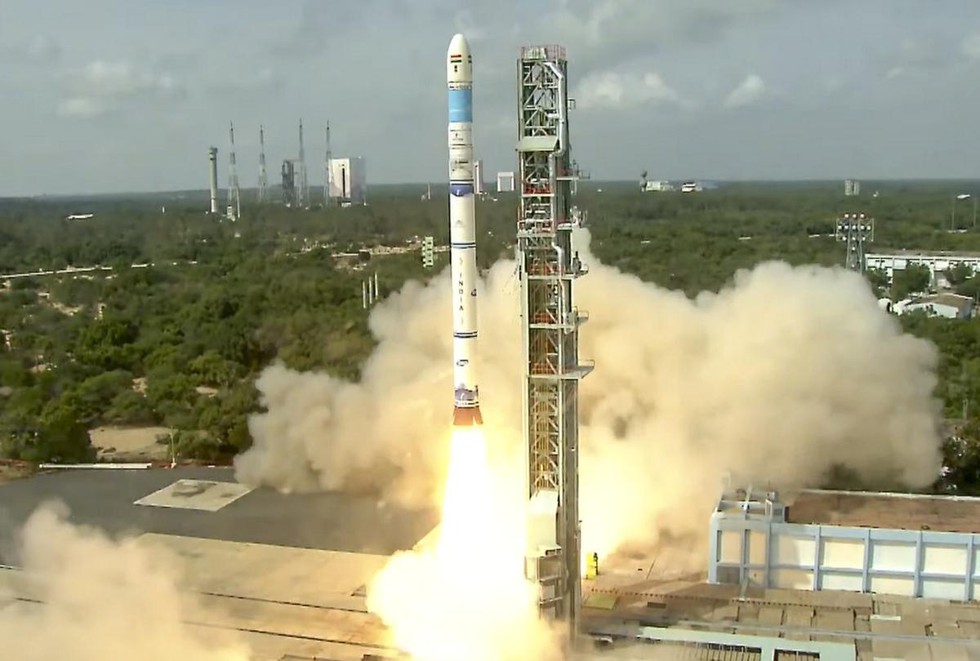About Small Satellite Launch Vehicle:
- It is a three-stage Launch Vehicle configured with three Solid Propulsion stages.
- It also has a liquid propulsion-based Velocity Trimming Module (VTM) as a terminal stage, which can help adjust the velocity as it prepares to place the satellite.
- Aim: The aim behind SSLVs is to produce low-cost launch vehicles with short turnaround times and minimal infrastructural requirements.
- It can launch satellites weighing up to 500 kg and accommodate multiple satellites.
- Before SSLVs, smaller payloads had to be sent into Space using other launch vehicles carrying multiple, bigger satellites. They depended upon the launch schedules of those satellites.
- The rocket provides low-cost access to space, offers low turn-around time and flexibility in accommodating multiple satellites, and demands minimal launch infrastructure.
Key facts about the EOS-08 Earth Observation Satellite
- It is a first-of-its-kind mission built on a standard ISRO’s Microsat/IMS-1 bus with a suite of advanced payloads for observation in the IR range, novel GNSS-R Payload and SiC UV dosimeter.
- Objective: It includes designing and developing a microsatellite, creating payload instruments compatible with the microsatellite bus, and incorporating new technologies required for future operational satellites.
- It carries three payloads:
- Electro Optical Infrared Payload (EOIR): It is designed to capture images in the Mid-Wave IR (MIR) and Long-Wave IR (LWIR) bands, both during the day and night, for applications such as satellite-based surveillance, disaster monitoring, environmental monitoring, fire detection, volcanic activity observation, and industrial and power plant disaster monitoring.
- Global Navigation Satellite System-Reflectometry payload(GNSS-R): It demonstrates the capability of using GNSS-R-based remote sensing for applications such as ocean surface wind analysis, soil moisture assessment, cryosphere studies over the Himalayan region, flood detection, and inland waterbody detection.
- SiC UV Dosimeter: It monitors UV irradiance at the viewport of the Crew Module in the Gaganyaan Mission and serves as a high-dose alarm sensor for gamma radiation. The spacecraft has a mission life of one year.
